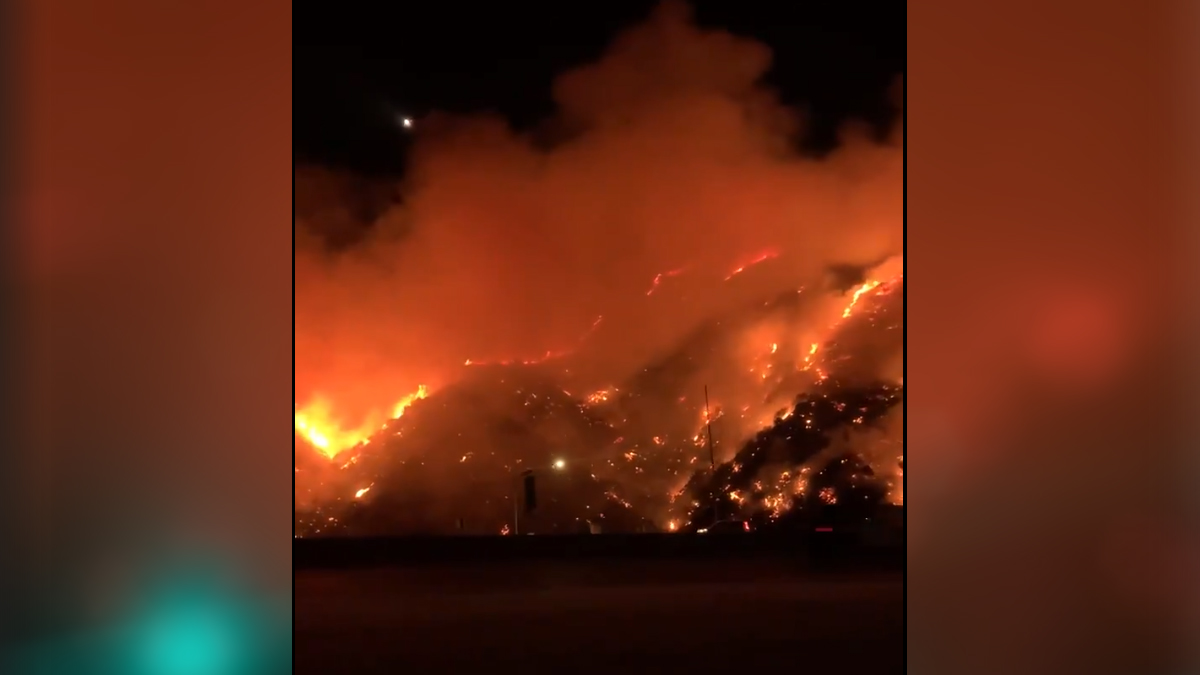
A brush fire started in the hills above the Orange County coast and quickly burned uphill into a neighborhood, burning at least 20 homes this week. It is a stark reminder of the threat posed to neighborhoods by fast-moving wildfires.
Residents should be prepared for a continued threat from wildfires as we enter the hot and dry summer months.
Below are some ways you can harden your home from the roof on down and make it more fire resistant.
Roof
Get top local stories in Southern California delivered to you every morning. >Sign up for NBC LA's News Headlines newsletter.
The roof is the most vulnerable part of your home. Homes with wood or shingle roofs are at high risk of being destroyed during a wildfire. Build your roof or re-roof with materials such as composition, metal or tile. Block any spaces between roof decking and covering to prevent embers from catching.
Vents
Vents on homes create openings for flying embers.
- Cover all vent openings with 1/16-inch to 1/8-inch metal mesh. Do not use fiberglass or plastic mesh because they can melt and burn.
- Protect vents in eaves or cornices with baffles to block embers (mesh is not enough).
Eaves and Soffits
Eaves and soffits should be protected with ignition-resistant* or non-combustible materials.
Windows
Heat from a wildfire can cause windows to break even before the home is on fire. This allows burning embers to enter and start fires inside. Single-paned and large windows are particularly vulnerable.
- Install dual-paned windows with one pane of tempered glass to reduce the chance of breakage in a fire.
- Consider limiting the size and number of windows that face large areas of vegetation.
Walls
Wood products, such as boards, panels or shingles, are common siding materials. However, they are flammable and not good choices for fire-prone areas.
- Build or remodel your walls with ignition resistant* building materials, such as stucco, fiber cement wall siding, fire retardant, treated wood, or other approved materials.
- Be sure to extend materials from the foundation to the roof.
Decks
Surfaces within 10 feet of the building should be built with ignition-resistant, non-combustible, or other approved materials.
- Ensure that all combustible items are removed from underneath your deck.
Rain Gutters
Keep rain gutters clear or enclose rain gutters to prevent accumulation of plant debris.
Patio Cover
Use the same ignition-resistant materials for patio coverings as a roof.
Chimney
Cover your chimney and stovepipe outlets with a non-flammable screen. Use metal screen material with openings no smaller than 3/8-inch and no larger than 1/2-inch to prevent embers from escaping and igniting a fire.
Photos: What to Keep in Your Disaster Emergency Kit
Garage
Have a fire extinguisher and tools such as a shovel, rake, bucket, and hose available for fire emergencies.
- Install weather stripping around and under the garage door to prevent embers from blowing in.
- Store all combustible and flammable liquids away from ignition sources.
Fences
Consider using ignition-resistant* or non-combustible fence materials to protect your home during a wildfire.
Driveways and Access Roads
Driveways should be built and maintained in accordance with state and local codes to allow fire and emergency vehicles to reach your home. Consider maintaining access roads with a minimum of 10 feet of clearance on either side, allowing for two-way traffic.
- Ensure that all gates open inward and are wide enough to accommodate emergency equipment.
- Trim trees and shrubs overhanging the road to allow emergency vehicles to pass.
Address
Make sure your address is clearly visible from the road.
Water Supply
Consider having multiple garden hoses that are long enough to reach all areas of your home and other structures on your property. If you have a pool or well, consider getting a pump.
Sam DiGiovanna is a 35-year fire service veteran. He started with the Los Angeles County Fire Department, served as Fire Chief at the Monrovia Fire Department and currently serves as Chief at the Verdugo Fire Academy in Glendale.



